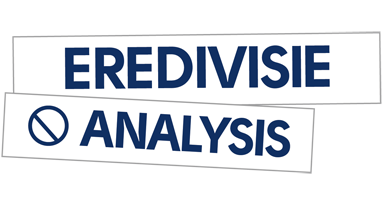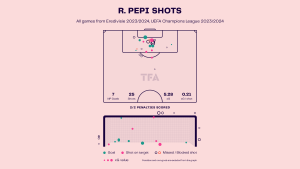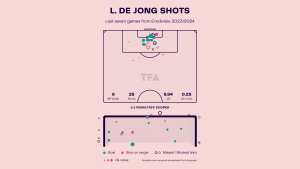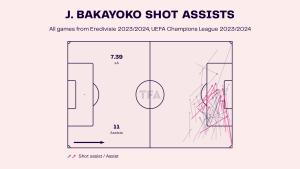Erve Asito played host to Heracles vs PSV in matchday 3 of the 2020/21 Eredivisie season. Heracles were, as usual, comfortably mid-table. However, Frank Wormuth’s side needed to show significant improvement after suffering a 4-0 drubbing against Willem II. PSV on the other hand were coming into this match off the back of a perfect start to the Eredivisie. Roger Schmidt’s men had picked up two wins without much trouble and were looking to cement themselves in the title race with another 3 points.
Heracles managed to hold de Boeren to a 1-1 draw in a tale of two penalties. This tactical analysis aims to outline the events that led to this scoreline and offer potential solutions to some of the problems faced by each side.
Lineups

Heracles set up in a highly defensive 5-3-2 formation, preparing to try and contain PSV’s attack. When attacking, they would move into a 3-2-4-1 or 3-2-3-2 shape depending on whether a striker dropped back slightly to support the build-up. Full-backs Jeff Hardeveld and Tim Breukers advanced into the third line, while three centre-backs sat back in order to reduce any counter-attacking threat from PSV.
PSV initially set up in a 4-2-3-1 formation. They would attack and press in more of a 4-3-3 shape with wingers Bruma and Mauro Júnior advancing to support Cody Gakpo. Defensively they would move into a 4-4-2 or 4-4-1-1 shape, with two banks of four in front of the ball proving to be a difficult barrier for Heracles to break down.
Heracles in defence
Heracles’ 5-3-2 formation shows that they had approached the game with defence as a priority. After going a goal up and particularly in the second half we saw them focus almost solely on defending, and this was particularly clear to see in the final 15 minutes of each half.

They played a fairly deep 5 man defensive line in order to contain PSV’s attackers. This can be considered successful due to the fact they came away with a point and didn’t concede from open play.
For the most part, Heracles were also good at reducing the threat from PSV’s wingers.

Heracles’ 5 man defence meant that they were spread quite wide across the pitch, leaving less space free in the channels and half-spaces for PSV’s wingers to operate in. Combine this with the fact that they played a deep line and you begin to see why it was difficult for the wingers to have any success in beating the full-backs.
The above image also shows how players would drop back to prevent wingers from using the full-back as an option. This left the winger with little choice but to try and advance into whatever space remained behind the defender.
PSV’s attacking plan
It will come as no surprise to anyone who’s watched Roger Schmidt’s training sessions with PSV that they would regularly try to build-up centrally. The former Bayer Leverkusen boss’s side can be seen working on breaking lines in training and one can assume that the tight space they work in is designed to simulate the crowded centre of midfield.

This area of PSV’s build-up is a strength. They look to play quick combinations in midfield that end with one of the three forwards being played through. These were particularly dangerous after the introduction of Donyell Malen, as he has the ability to accelerate away from defenders quickly once played through.

The strength of this aspect of their build-up is backed up by the quality of chances that were created through the middle of the pitch.

However, because Heracles’ defensive line was sitting fairly deep, there was little space for attackers to run into behind the defensive line. This made PSV’s preferred tactics of penetrating through the middle of the pitch much harder.
One potential solution to this problem for PSV would be to use switches to exploit the space on the other side of the pitch.
As the above image shows, after PSV’s build-up on the right side of the pitch, 9 of Heracles’ 10 outfield players were positioned on the side of the pitch where the ball was. This leaves large areas of space for Phillip Max to receive the ball in, and in football space means time. Depending on his position, Max can either look to get behind Lucas Schoofs and cross the ball or play the ball through the gap between the right-back and the right-sided centre-back.
Heracles in attack

Heracles were the opposite of PSV in terms of their plan to move through the thirds. They were much more confident in attempting to play around opposition lines rather than through them. This trend is visible in Heracles’ passing stats, particularly their passing network.
Their stubbornness to attempt penetrative passes caused them problems in their build-up play. More often than not the first phase of attack was to play the ball out wide to a full back. If, as a unit, the defenders could start an attack from higher up the pitch, the full-backs would advance and look to receive the ball in or near the final third.
Ironically, Heracles did counter centrally just before half time and would have been 2-0 up if it hadn’t been for a tight offside call. Had this decision gone the other way they might have taken the 3 points home.

Following the build-up, the full-backs would look to play (mostly high) crosses into the box towards the strikers, unsurprisingly all of whom were at least 6ft tall. WyScout stats show that Heracles attempted 18 crosses in total, 38% more than their opponents.
Their hesitancy to try and attack centrally can also be linked to Wormuth’s choice to play a back five. While the full-backs did advance during the attack, the three centre-backs all remained in their positions. Add this to the fact that Heracles set up with two strikers and just how little chance they had of dominating possession in the centre of the pitch becomes apparent. They were overloaded 5v3 at the best of times.

Rai Vloet added a dangerous alternative to Heracles’ aerial threat. He would drop back to the edge of the 18-yard-box in order to pick up loose balls and attempt to shoot from range. He managed to do this on multiple occasions throughout the game and PSV failed to pick up on it.
It could be argued that it was more important for PSV to mark the two strikers who were the target of these crosses. However, more often than not there would only be 2 attackers in PSV’s box, meaning the defenders were overloading them 4v2 or 5v2. It was therefore surprising that, as this was a recurring threat, not even one defender was tasked with marking or shutting down Vloet.
It became difficult for Heracles to pose any serious threat due to their failure to advance past PSV’s press. Trying to play out to wide areas in your own half (and particularly your defensive third) can be dangerous and PSV reminded Heracles why.

PSV would use a full back dribbling or passing the ball short out of his own third as a trigger to press as a four. This creates a 4v4 but realistically trying to play back to Robin Pröpper isn’t safe as if the place is poor, Gakpo will be through 1v1 with the keeper. This means Mats Knoester only really has two options in Hardeveld and Bijleveld.
As a consequence of the man on the ball being pressed, he’s rushed to make a decision while simultaneously having his options cut off.
This is a particularly good area to press as the defender can only play forwards, backwards or inside (right). The more you can “trap” the man on the ball, the more likely you are to be successful in your press and PSV do this excellently here. Heracles struggled to consistently find a way around the press but there are ways to do so.

The central or deep-lying midfielder (in this case Bijleveld) is still being pressed (by Pablo Rosario), however, he is the least aggressive of the four PSV players. This means that, if he’s quick, Bijleveld can drop into space between these pressing players and look to escape by using one of two options. He can quickly combine with a team-mate (e.g. Hardeveld) or change direction and look to switch the play to a more spacious area of the pitch.
We do see Bijleveld move into this space occasionally, however his run is both too slow and too predictable. He would be more successful if he attempted to shape his run differently (e.g. move inside before quickly moving back outside), or quickly accelerate away from Rosario. The more he can surprise Rosario, the more time he will have to decide what to do once he receives the ball.
A great example of a player who does this is Liverpool’s Thiago. He’s able to quickly drop in and out of pockets of space and is composed enough to attract opposition defenders. This frees up space for other players to occupy and he also has the vision to pick out teammates in space, often higher up the pitch.
PSV’s changes
After a lacklustre first half performance, Schmidt made changes that included the introduction of Donyell Malen and Noni Madueke. The two aforementioned men, who spent their formative years in North London, were brought on in an effort to create a threatening front 3.

By this point, PSV had changed their shape to a 4-3-3 in a statement that suggested they would be attacking aggressively until the final whistle. Gakpo had failed to register an attempt on goal, so the game had been crying out for last season’s top scorer Malen to come on and lead the line.

Aggressive pressure from the midfield three meant that PSV were looking much more threatening. By quickly transitioning to attack after winning the ball, PSV could set up a 3v3 against the Heracles centre-backs. Their attackers have a qualitative advantage over the opposition defenders, particularly in terms of Malen’s speed. This allowed PSV to produce their biggest chance in open play by playing Malen through on goal.
Unfortunately for PSV, despite the fact that they created as many chances in the last 10 minutes as they had in the previous 80, they were unable to make a breakthrough. However, this late resurgence can be taken as a promising sign by Roger Schmidt as it shows that his side are capable of affecting the game through tactical changes.
Conclusion
In summary, this analysis shows that both teams struggled to break down the opposition’s defence. This is made clear by the expected goals stats. Taking away each penalty, we’re left with Heracles on 0.44 and PSV on 0.81 (WyScout).
Heracles will be pleased with their ability to limit the opposition’s attackers, who were generally expected to dominate due to their qualitative advantages over their opponents. They also put more pressure on PSV than most people would have expected them to so it’s hard to argue that they were undeserving of at least a point.
Roger Schmidt will need to re-evaluate his teams’ attacking tactics. While some may put it down to certain players not performing, in the end, PSV were unable to break down Heracles’ defenders and overcome the low block. Credit shouldn’t be taken away from Heracles, but PSV will need to improve to be able to threaten stronger opponents and challenge for the title.









